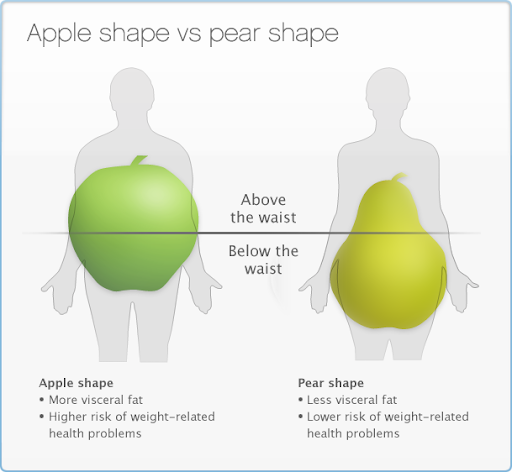A positive association between obesity and risk of T2DM has been established repeatedly in many cross-sectional and prospective studies. The association of obesity with T2DM is complex and compounded by many factors. Obesity not only is a risk factor for development of diabetes, but also complicates the management of the disease.
A person is at high risk for diabetes if he/she is overweight (body mass index [BMI] of 25 kg/m or BMI >23) and have one or more additional risk factors, such as:
- Less physical activity
- Family history of T2DM
- High-risk race/ethnicity (African American, American Indian or Alaska Native, Asian American, Hispanic or Latino, Native Hawaiian or Pacific Islander)
- High blood pressure (140/90 mmHg or higher)
- High cholesterol (240 mg/dL or higher)
- Clinical conditions associated with insulin resistance, such as severe obesity, or the development of dark, thick skin in body folds and creases (a condition which is called “acanthosis nigricans”)
- History of Cardiovascular Disease (CVD)
- Have prediabetes
Tips For Management of Obesity in Diabetes-
1] Re-invent the patient’s diet plan :
Processed foods such as white bread, biscuits, cakes, etc. increase the risk of developing diabetes. Hence, their consumption must be avoided. Also the intake of whole grains should be increased, as these foods have complex mixture of components which benefit the
health. Avoid trans-fatty acids, which are commonly found in margarines, fried foods, and many packaged/ processed foods. Instead, include intake of fats from sources such as nuts, avocados, fatty fishes, eggs, etc.
2] Ensure intake of the right nutrients :
Revised diet plan must contain the following:
- High-quality multivitamins and minerals
- One to two grams of omega-3 fatty acids
- 1,000 – 2,000 IUs of vitamin D3
- 300 – 600 mg of alpha lipoic acid twice daily
- 200 – 600 mcg of chromium polynicotinate
3] Shedding weight :

Shedding pounds can improve blood glucose levels and help keep T2DM under control. People who have more abdominal fat (apple shape) have a greater risk of developing T2DM than those with fat mostly in the thighs, hips, and buttocks (pear shape). A healthy diet and regular aerobic exercise helps in shedding as well as maintaining ideal weight.
4] Getting the right exercise :
A person with diabetes does not need to spend hours at a gym to get exercise’s benefits. A simple 30-minute walk everyday can help. It is an effective exercise that helps balance blood sugar glucose and lower insulin levels.
5] Measures to improve health :
Records show that people who track their progress tend to lose twice as much weight, and do twice as well. Ask the patient to begin recording in order to track their own progress. Paper pads, notebooks, spreadsheets in their computer are examples of some tools which may help the same. In addition to what they eat a baseline of all measurements: weight, waist size, BMI, and blood pressure (optional) should be recorded every week. Many patients become inspired when they see their results on paper.
These management strategies can have a dramatic impact on blood glucose levels and the progression of T2DM. Simple lifestyle changes will improve the patient’s quality of life, and will help ensure a healthier future.
If you like this article , share with your friends


